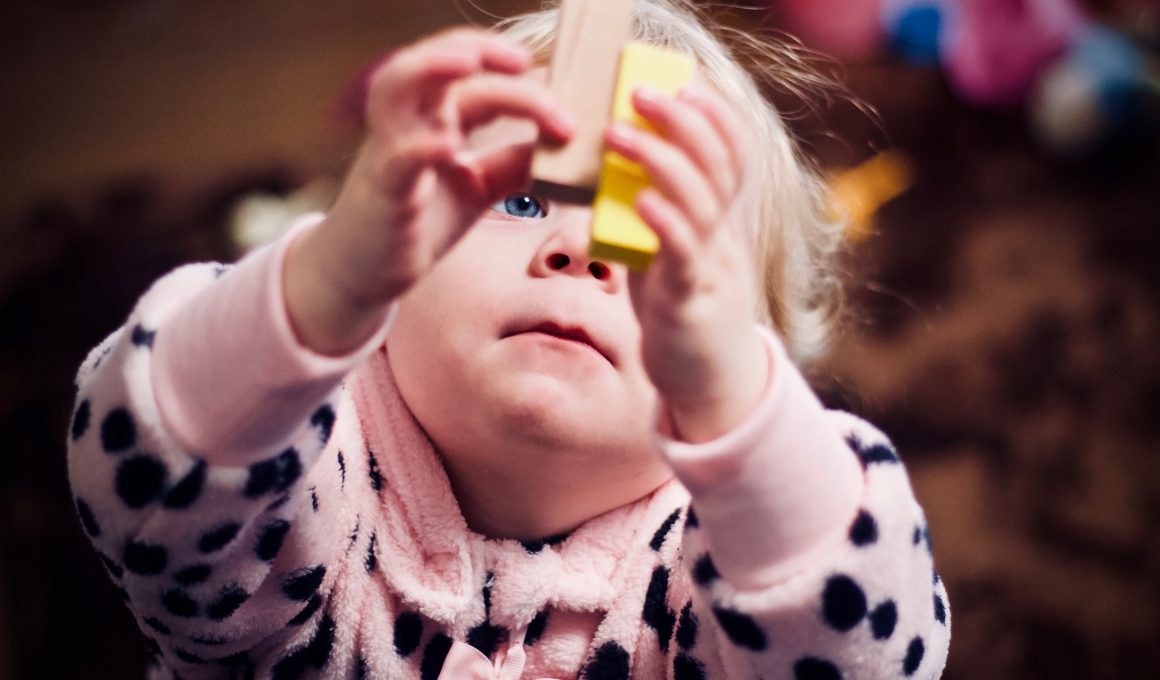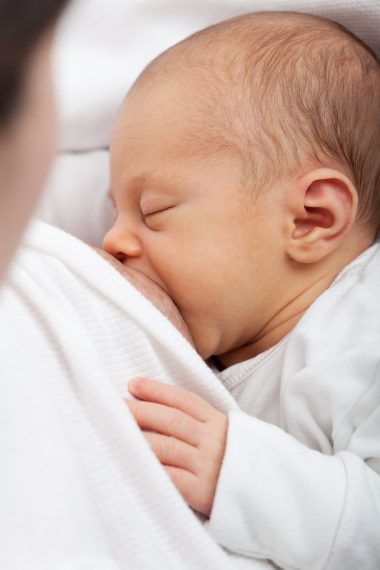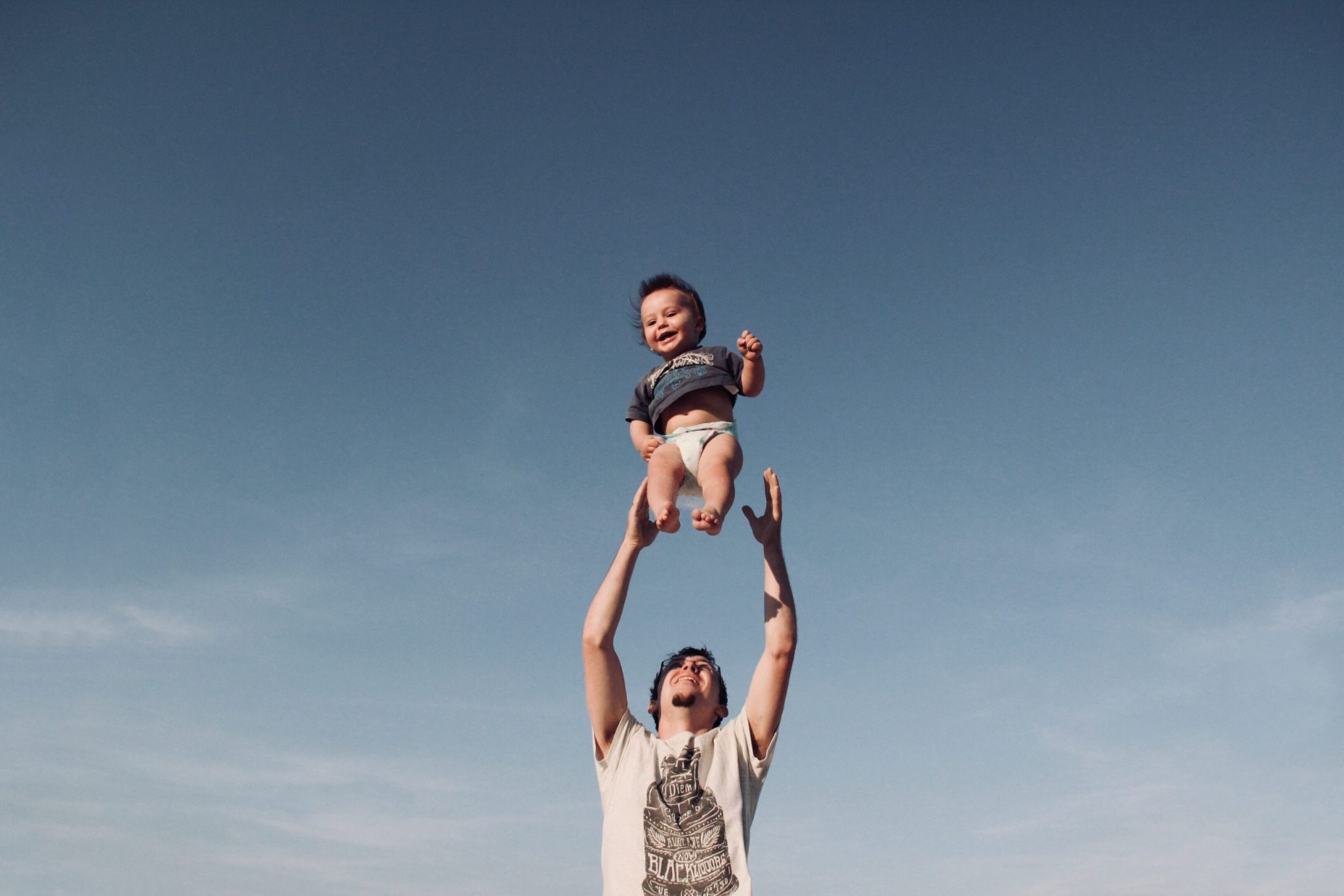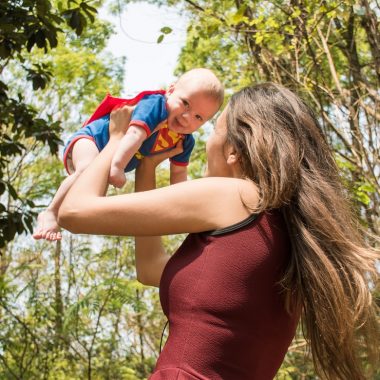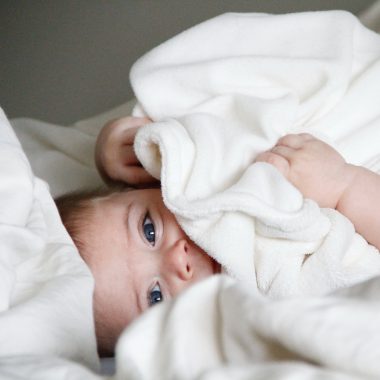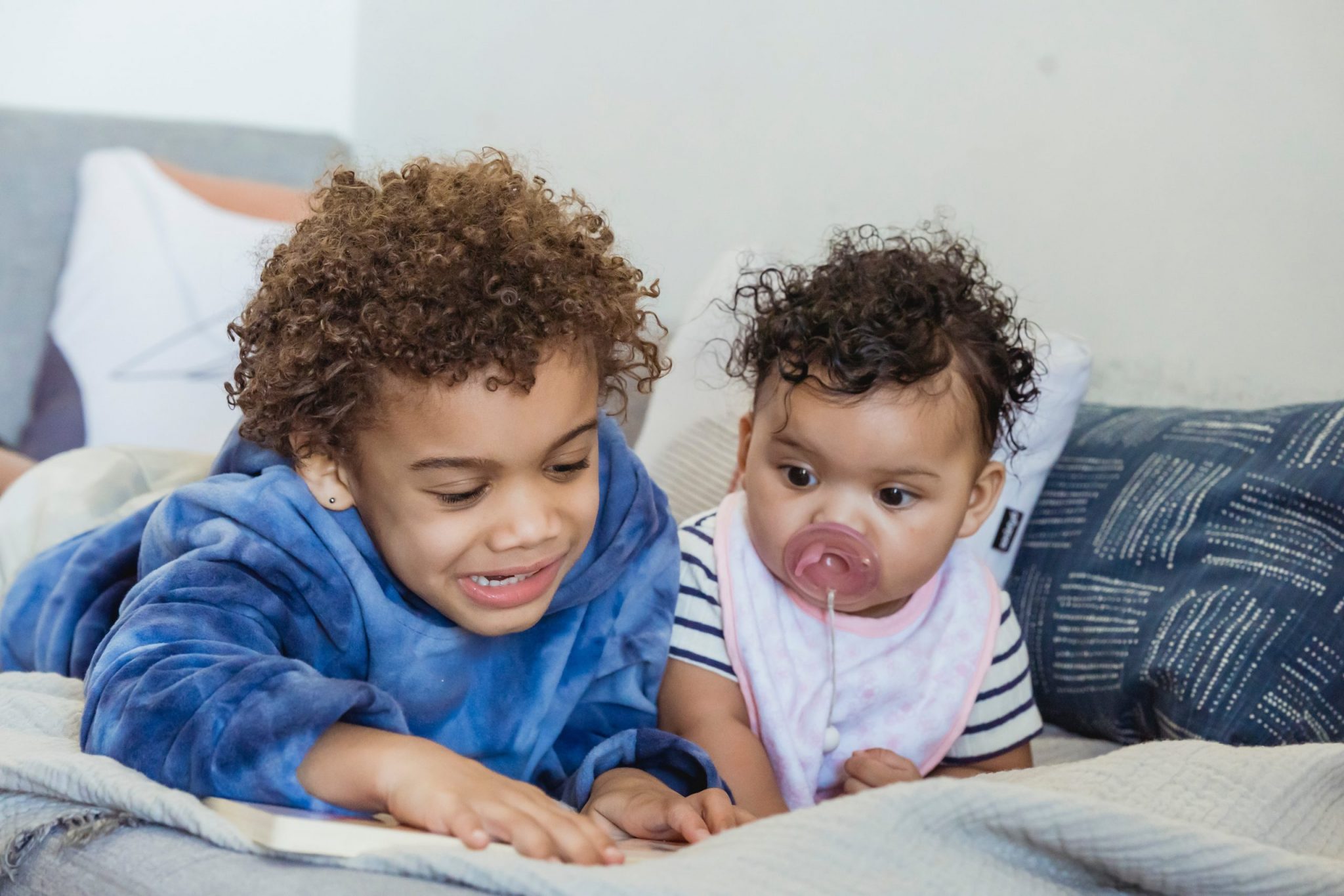From birth to age 3, your child’s brain undergoes rapid development. Brain development subsequently affects all areas of your baby’s growth. These areas of development include physical, communicative and linguistic, social and emotional, and cognitive skills.
With respect to cognitive development, your baby begins to think, learn and apply problem-solving skills. These skills affect all areas of development.
For that reason, the first three years of a child’s life are critical for learning and development. And many parents continuously seek the answer to the question: How can I support my baby’s brain development?
You may not realize it, but you support your baby’s brain development every day. By responding to their needs, talking, singing, holding them, reading to them, and just being there when they need it, you are helping them form connections in the brain.
We depend heavily on human connection and interaction. During infancy, interaction is the key factor for getting to know the world around us. Using visuals and sounds, looking into your baby’s eyes, and being sensitive to your baby’s feelings and needs all qualify as healthy interactions.
Experts strongly emphasize that your baby needs to interact with you and the world around them in order to learn and grow. Simple activities and games are effective ways of communicating with your child. They contribute to growth and development as well. Studies show that the best activities build a sense of emotional safety that allows growth.
In this article, you will learn about different cognitive development milestones and fun activities and games that boost brain development.
Which cognitive developments to expect in infancy?
A wide range of cognitive development milestones occur in the early years of a baby’s life.
To give you an idea of what to expect from cognitive development in infants and babies as well as toddlers, read on. There are also some fun cognitive development activities listed.
Cognitive development milestones in infants
During the first months of life, babies can experience these cognitive development milestones:
- Paying attention to faces
- Expressing interest in objects or activities
- Following objects with their eyes
- Recognizing familiar people or objects
- Putting things in their mouth
- Picking things up and moving them
- Passing toys from one hand to another
- Looking for things to hide and engaging in peek-a-boo
- Responding to affection
- Demonstrating curiosity
- Pointing to their body parts
- Understanding gestures or saying certain words
Cognitive development activities for babies
To encourage and boost cognitive development in babies, you can try to incorporate the following activities into your baby’s daily routines.
- Establish routines and maintain them consistently.
- Talk, read, sing, and play together (feeding, dressing, and bathing are great examples).
- Look at pictures and picture books together.
- Hold a toy or rattle above their head and encourage them to reach for it.
- Pay attention to different cries to learn what your baby wants.
- Play peek-a-boo.
- Play hide and seek with toys and age-appropriate objects.
- Allow your baby to safely reach for toys, kick their feet and explore their surroundings.
- Point to and talk about your surroundings.
- When your baby drops something on the floor, pick it up and give it back to them to explore cause and effect.
- Describe the behaviors you want instead of those you don’t. For example, tell baby, “feet on the floor” instead of “do not climb.” Positive communication is very important.
Cognitive development in toddlers
After one year or age, your baby should be able to engage in more complex cognitive tasks. The following developmental indicators can help you map their progress:
- Scribbling on their own
- Displaying better memory and attention span
- Naming colors and shapes
- Participating in caregiving activities for a doll or a stuffed animal
- Engaging in simple pretend play
- Naming items in a picture book (e.g. “dog” or “baby”)
- Finding objects hidden under multiple layers
- Completing sentences or rhymes in familiar books
- Solving puzzles
Cognitive development activities for toddlers
Some activities you can engage your toddler in to boost cognitive development include:
- Talking to your child about your daily routines and what you’re doing
- Solving puzzles together
- Encouraging your child to help with simple household activities
- Asking simple and engaging questions
- Playing with building blocks
- Practicing identification (e.g., ask your child to name parts of their body or what they see from the window)
- Encouraging pretend play
- Playing hide and seek with objects around the house
What are the benefits of play?
Maria Montessori, an Italian educator who developed the Montessori Method, said: “Play is the work of the child.”
Play is a wonderful way to help your baby or toddler’s brain develop. Besides, playing with your baby sends them a very important and simple message: “You are important to me.”
This message strengthens your bond with your baby, which is essential to development since it gives your baby the confidence to keep exploring and learning.
Always remember that children can learn much more about their world and themselves when they are allowed to explore their world through meaningful activities.
Play improves children’s cognitive, physical, social, and emotional well-being.
They also learn skills such as:
- confidence
- self-esteem
- resilience
- interaction
- social skills
- independence
- curiosity
- coping with challenging situations
How to play with your baby?
Babies spend all their time learning just by observing their environment while awake. So what you do when you are near your baby creates a learning environment. You are constantly teaching your baby – when you chat during diaper changes, hold them, or kiss them before bed. Simply being someone whom your baby trusts creates a learning environment.
Playing with your baby doesn’t have to be complex. Just be present. That’s all you and your baby need. Keep it simple. Think of simple materials or no materials at all. The best games are the ones that come naturally between you and your baby.
Below you will find some more suggestions to take into consideration when playing with your baby:
Play when your baby is happy and rested: Children have different thresholds for stimulation. When your baby seems bored, fussy, or tired, stop playing and support your baby to get some rest.
Interact daily with your baby: Respond to their vocalizations and facial expressions. Respond to their actions and reaction using appropriate and clear responses. Provide empathic reactions to help your child learn about feelings and emotions.
Don’t ignore repetition: A baby’s attention span varies greatly due to age, temperament, and mood. Many play ideas don’t work the first time. So don’t hesitate to repeat yourself. And don’t forget to watch your baby’s clues. When they get bored and fussy and start crying, make sure to take a break.
Let your baby play alone: Put it in a safe space on the floor with toys nearby and let them spend some time alone. Let them play alone, but do keep and eye on them.
Add fun to your daily routine: Every interaction you have with your baby can be fun and an opportunity to learn. Try to find joy in everything you share with your baby.
Create a safe learning environment: Organize your house for your child to crawl around and adapt to spatial parameters safely. It’s important that your home is childproofed.
Play games that involve using hands: Bubble blowing, finger painting, and scribbling are all good examples of games that involve using hands.
Develop a daily reading routine with your baby: This helps build language skills and makes your baby an active listener.
Set a good example: Always remember that children imitate their parent’s actions and words.
Brain-boosting activities for babies
There are plenty of different activities that you can try with your baby for brain-boosting purposes. These activities don’t need to be complex. Even simple things can promote cognitive development and teach your baby more about themselves and their world.
0-6 months
You will witness rapid growth and development from 0-6 months.
In this period you can do lots of things to support your baby’s brain development, and they are all quite simple.
Reading books, singing songs and reciting nursery rhymes are easy and efficient ways of interacting with your baby.
Below you will find some more activity ideas to boost your baby’s cognitive development.
Mirror play: Your baby loves to look at their reflection. You can use a simple, baby-safe mirror for this activity. Let them gaze at their image. You can also make some silly faces or describe what they are seeing.
Make a funny face: Try a smile, a big, open mouth, raised eyebrows, or stick your tongue out. Don’t be surprised if your baby tries to do the same thing. Even tiny infants can imitate facial expressions. Make some noises to hold their attention.
Where is the body part?: Use a sing-song voice while showing your baby where their toes are. Repeat this with different body parts, such as their nose and tummy. This will help them learn the meaning of words and their body parts.
Peekaboo: When you hide a toy under a blanket or put your hands in front of your face to hide it, your baby won’t understand that the object is still there due to a lack of object permanence. As they grow, they will begin to understand that even though they cannot see the toy under the blanket, it is still there. This game strengthens object permanence.
Eyes, nose, mouth: This game will teach your baby social skills and help the two of you bond. Hold your baby’s hands and guide them to touch your own eyes, nose, and mouth, then give them a kiss: “Eyes, nose, mouth, smooch!”
This little piggy: Starting with the big toe, the pigs “went to market,” “stayed home,” “ate roast beef,” “had none,” and the pinky toe (tickle all the way up your baby’s body at this stage!) “cried wee, wee, wee, all the way home.” This game is ideal for sensory development.
Pattycake: Clap your baby’s hands together as you recite, “Patty-cake, patty-cake, baker’s man! Bake me a cake as fast as you can.” Help them “pat” and “roll” as you continue: “Pat it, and roll it, and mark it with a B.” And then, “Put it in the oven for baby and me!”
Vary the game by substituting your baby’s name or switching to their feet: “Patty-cake, patty-cake, baker’s feet! Bake me a treat that’s good to eat.….”
So big: Hold your baby’s hands. Then ask, “How big is baby?” Then spread their arms wide and answer, “Sooooo big!” This play supports your baby in realizing the differences between “big” and “small.”
Touch and feel: Find different objects or pieces of cutout fabric with varied textures. Let your baby explore their senses by touching the different textures (e.g., sandpaper, felt, cotton, satin, etc.)
6-12 months
At this age, you can find many more ideas for play and activities.
Reading: Reading is very important for your baby’s rapidly developing brain. Simple picture books are fine to read to your baby. Even if you don’t read the books to your baby, you can look at the pictures and talk about them. This helps your baby with language skills and strengthens the parent-child bond.
Building blocks: Block play is a great way to boost your child’s cognitive development. It helps build hand and eye coordination. It also promotes problem-solving, critical thinking, and gross motor skills.
A baby will begin by hitting blocks together. And by doing this, they learn that hitting two objects together creates noise!
Blocks that are specifically numbered or contain any subject matter (e.g., letters) influence the importance of learning different concepts.
Hide and seek: Not only does hide-and-seek make your baby joyous, but it also supports their gross motor skills and encourages physical movements.
Playing peekaboo and hide-and-seek provides an understanding of object permanence, which means that things continue to exist even if they are not near you.
These games are also related to developing imaginative and creative thinking.
Solving puzzles: Solving puzzles is an inseparable part of early childhood development. It promotes skills related to developing finger strength, high attention spans, and shape recognition. Picking up and placing the puzzle pieces promote hand-eye coordination and fine motor skills. It directly promotes the ability to test ideas (i.e. problem-solving).
There are many kinds of puzzles available for children of every age. Shape puzzles, knob puzzles, frame puzzles, peg puzzles, and floor puzzles are just a few examples.
Storytelling: Every child loves stories without exception. Storytelling helps children imagine and inspires curiosity. It is the most interesting and engaging way to talk about real-life experiences.
Blowing bubbles: Usually, all children like bubble-blowing. It helps establish hand-eye coordination with oral-motor skills. It is a great brain development activity. You can talk to your baby about many concepts like shapes, directions, speed, color, etc.
Hand-painting: Hand painting is a very effective brain development activity. It boosts self-expression and extraordinary thinking. This activity helps express emotions without words. When dipped in colors, your baby’s hands will bring out their most creative side.
The pouring game: For this activity, you need plastic bowls and pourable items (such as water, sand, or rice). To get your child started, show them how to pour water from one container to another. Then they will be ready to roll on their own. To take this game to the next level, introduce your baby to the concepts of full and empty, heavy and light, and wet and dry.
Two little blackbirds: You can play this by using both hands to act like two birds. As one bird flies away, hide your hand behind your back (your baby will wonder where it went!). Then, when the bird returns, bring your hand back around.
This is how it goes:
“Two little blackbirds sitting on a hill
One named Jack and one named Jill
Fly away Jack, fly away Jill
Come back Jack, come back Jill.”
Puppet play: Using puppets, you can play peekaboo, act out stories or songs, and keep your baby company in unfamiliar places. This encourages your baby to imagine, focus, laugh, and talk.
Roll a ball: Another easy and very effective play method is rolling a ball back and forth between you and your baby. Use different sizes and explain the shapes, colors, and textures. Ball play builds hand-eye coordination, gross and fine motor skills, spatial awareness, grasping, problem-solving, balance, and even language and social skills.
References: raisingchildren.net.au, babycenter.com, healthline.com, sanfordhealth.org, whattoexpect.com, parentingscience.com, nidirect.gov.uk


